An Exclusive Interview With Daniel Sackheim
By Leila Antakly
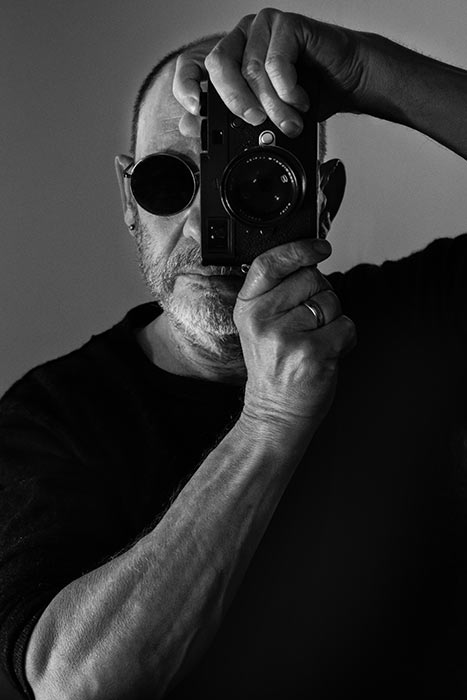
Daniel Sackheim is an American Film & Television director and producer best known for his highly acclaimed series as HBO’s True Detective Season 3, Game of Thrones, and FX’s The Americans.
He received a 2017 Emmy nomination for directing the Ozark episode Tonight We Improvise, which is a category he won in ’94 for an episode of NYPD Blue.
Some of Sackheim’s other directorial credits include the Apple TV+ series Servant, Better Call Saul, The Leftovers, The Man in the High Castle, as well as multiple episodes of Ozark, The Walking Dead, and HBO’s critically acclaimed Lovecraft Country.
In addition to his television work, Sackheim directed the Sony feature film The Glass House, starring Leelee Sobieski, Diane Lane, and Stellan Skarsgard, and produced The X-Files: Fight the Future for 20th Century Fox.
Sackheim is a co-founder and fellow HBO alum Tony To (Earth to the Moon, Band of Brothers, The Pacific) of Bedrock Entertainment, which produces prestige content for streamers and premium cable platforms.
Sackheim’s photography, which occupies a space dominated by shadows, endeavors to explore a kind of Urban Narrative.
This attraction to the dark and ambiguous stems from his love of Film Noir and the heightened reality embodied by this film language. Like noir, his photography aims to access the subconscious and a world of omnipresent solitude and alienation. It is a pleasure to feature an interview with one of the most influential, gifted photographers & Film directors in Lens Magazine!
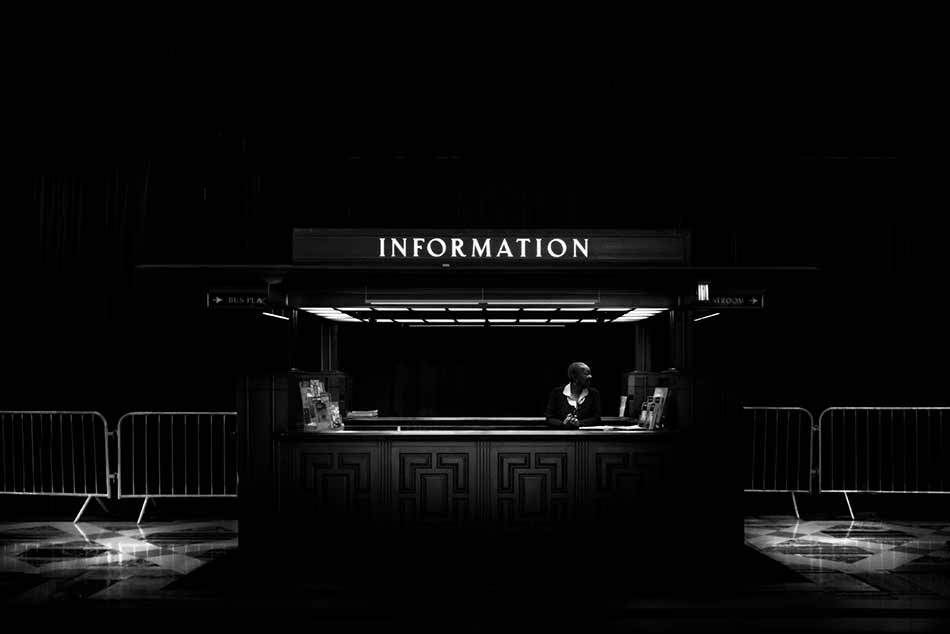
Daniel Sackheim © All rights reserved.
Leila Antakly: Hello Daniel, Thank you for taking the time to have this interview. Tell us about your greatest inspirations and influences on your work.
Daniel Sackheim: There is no shortage of extraordinarily talented photographers, all with varied styles, whose work I’ve long admired and have been a source of inspiration. Photographers like Sebastião Salgado, Ray K. Metzker, Saul Leiter—just to name a few. However, one artist whose work has long influenced my work (both as a photographer and director) is Edward Hopper. Though Hopper is most often thought of as a realist, his work has a very heightened reality about it; I think of him more as a surrealist. There is also the distinct voyeuristic perspective that, when combined with his dramatic interaction of light and shadow, brings a visceral tension to the isolated figures that inhabit his anonymous urban spaces. One could postulate that Hopper’s work strongly influenced the noir filmmakers of the 40s and 50s.
L. A.: When was that moment you knew that you wanted to get into film or photography, which happened first, and how did it happen?
D. S.: I was a shy kid who suffered from learning disabilities and didn’t have much aptitude for sports.
For a brief time, I played trumpet in my school orchestra, but I would not go so far as to suggest I have any musical talent.
I was a restless daydreamer with a love of fiction and movies and the escapism those narratives afforded. My older brother, who I idolized at the time, was everything that I was not: a musician (drummer), an athlete (surfer), and an extraordinarily gifted photographer in the making. He had in effect achieved the trifecta of coolness. I hoped, by trailing after him day and night like a lost puppy, that some of that coolness would rub off on me.
I can tell you now that it did not. One day, in an attempt to get me to spend my time elsewhere, he thrust a camera and a roll of Tri-Ex Pan B&W film into my hands with the not-so-subtle suggestion that I “take up a hobby.” I vividly recall my first time in a dark room, standing over a tray of developers, and the thrill of seeing my first image as it appeared before my eyes. Though I didn’t know in any concrete sense where this journey would take me, I knew then that I wanted to pursue
a life in the visual arts.
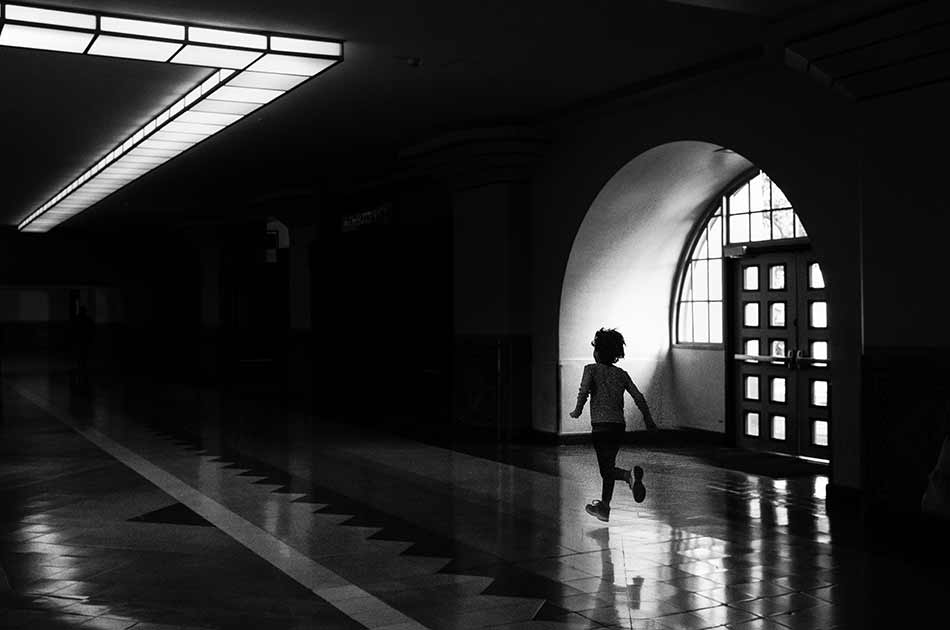
Daniel Sackheim © All rights reserved.
L. A.: From both a creative and technical perspective, how would you describe your creative process?
D. S.: Film and television directing are very prep intensive. This is a byproduct of tight shooting schedules, so planning essential. Ideally, you want to shoot the movie in your head before walking onto the set. If only by force of habit, I try to bring that same discipline (or obsession) to my still work. Unlike directing, the primary difference is that I don’t have a blueprint in the form of a screenplay as a starting point.
Once an idea for a concept starts to take shape (these ideas can come from a variety of places, such as a movie, a piece of fiction, an article that explores contemporary culture, or simply my imagination), I’ll start to jot down some ideas for themes and related visuals. This generally begins with some web research, followed by scouting and a fair bit of driving around. This process can take anywhere from a day to several weeks. I generally follow this up with a light study in order to pick the best time of day for the shoot.
At the end of the day, though, all the preparation in the world is just about giving me enough confidence to throw most of it away and wait for inspiration to hit. It’s not that I don’t end up shooting, or endeavoring to shoot, what I’ve planned so much as it never seems to end up working out as well as something unexpected. This goes not just for photography but directing as well. Orson Welles said it best: “The director is simply the audience. His job is to preside over accidents.”
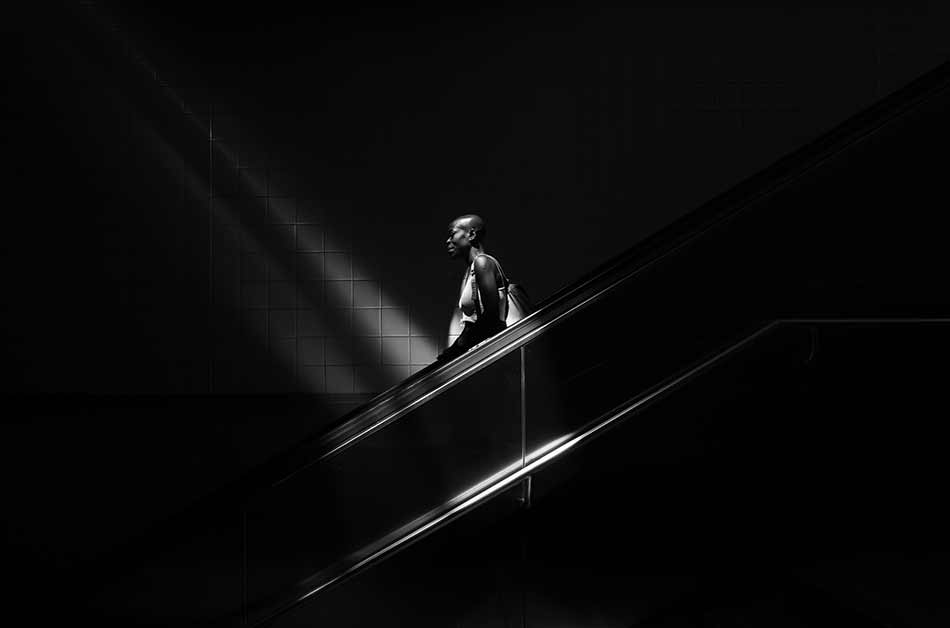
Daniel Sackheim © All rights reserved.
L. A.: How has this year influenced your creativity and your perspective, your worldview?
D. S.: Well, like many people, it’s given me time to reevaluate my priorities, both personal and work-related. It’s also bestowed on me a renewed sense of gratitude for my good fortune in weathering this storm. Creatively, it’s sparked a new direction, starting with a color series I now have in the works.
L. A.: Which is your favorite lens?
D. S.: It largely depends on the kind of image I’m trying to capture. That said, the lens that lives on my camera is a 24mm Summicron. I tend to gravitate towards wider, more cinematic frames and tableaus.
On the rare occasion that I get closer to subjects with this lens, I’m always surprised by how dynamic the resulting image turns out.
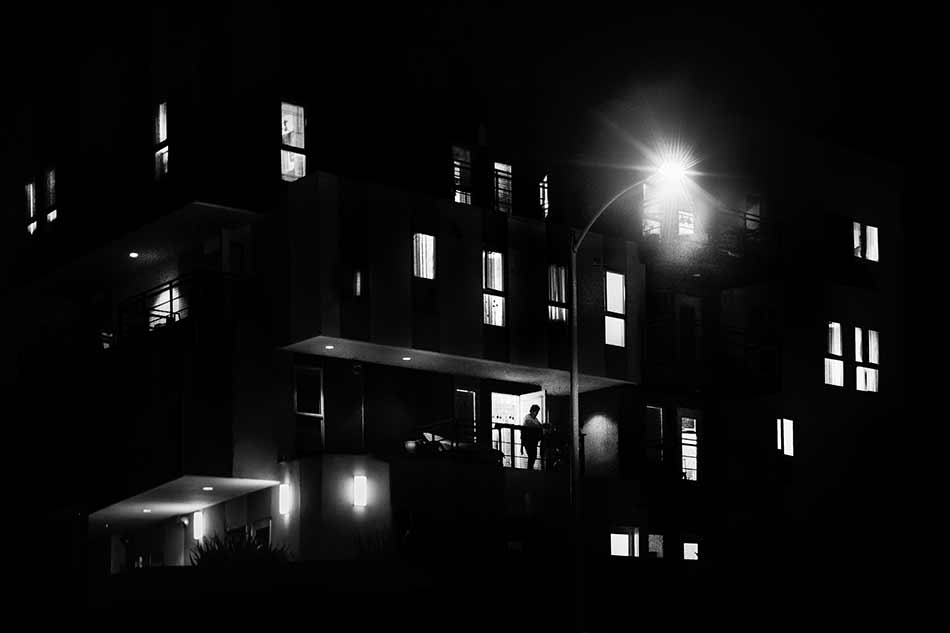
Daniel Sackheim © All rights reserved.
L. A.: Among your works for the series “UNSEEN,” do you have a favorite or a special memory from the shoot?
D. S.: “A Salary Man’s Night Out” is one of my more conventional images in that it really falls into the category of classic street photography, but the experience of shooting it resonates with me. I was in Tokyo for the first time, and I was struck by the vast number of identically dressed businessmen, all in dark suits, white shirts and dark ties, some version of the same cheap briefcase swinging from their wrists. There was a sense of weariness and isolation that really took hold of me. I grabbed many shots of these men on subways, rushing to meetings, carrying umbrellas on rainy nights. Still, nothing seemed to capture the sense of anonymity and solitude I experienced while watching them. Then one night, as I was walking through the back alleys of Shinjuku, I spotted this man, his back to me, sitting alone at a noodle bar. The fact that his face was hidden from me actually helped to convey what the other images could not.
L. A.: What type of cameras do you shoot with?
D. S.: Predominantly a Leica M10 and Leica M10-Monochrom. It’s not only the craftsmanship of the camera or the optics that initially drew me to this system but the simplicity and intuitive quality of the camera itself.
L. A.: How do you view the art world today? I would also love to hear your opinion on NFT’s.
D. S.: I’m excited by the emergence of the NFT marketplace. While clearly, it’s still in its incipient stages, I believe it holds great promise for artists. The decentralized nature of the technology and marketplace has resulted in putting more power into the artists’ hands. Admittedly, despite a lot of research, I feel like the more I learn, the less I actually know. It seems like it has the potential to completely revolutionize the art market as we know it by giving more photographers and other artists the ability to monetize their craft.
L. A.: A long time ago, I worked with a very strong conceptual artist whose photography really inspired me. I automatically assumed he would be a great filmmaker and director, but I realized that, in fact, the two are not intertwined. How did you find a balance in mastering the technique for both? Do you see them as separate crafts, or …..?
D. S.: Clearly, both art forms rely on one’s ability and skill set to craft stories using a visual medium. For me, that’s pretty much where the similarities start and end. Yes, some skills are applicable to both, such as composition and understanding the play of light, but directing is ultimately about the ability to harness and exploit other artists’ various tools and expertise in the pursuit of crafting a cohesive narrative.
Directing starts with your ability to interpret the script, i.e., the blueprint, and from there derive a strong point of view. As a director, the tools available to you are the dialogue and your ability to help craft an organic performance. The point of view also manifests itself in how one approaches staging, the selection of camera angles, and lighting. How you handle these elements will ultimately dictate the tone of the narrative. There is also the utilization of visual and special effects, sound design, music, etc. All the above go into constructing a cohesive and hopefully compelling narrative.
Conversely, still, photography is not burdened by the weight of a detailed narrative in the same respect because the essence of a still photograph lies in the fixity of that image. It is a slice of time that provokes thought and should pose the question: “What happened just before and just after the shutter was pressed?” Ambiguity in still images (unlike moving images) should be seen as an advantage instead of a deficit.
Lastly, filmmaking is a team sport requiring exchanges of creative ideas and interactions with other artists and craftspeople. It can be incredibly rewarding, but there are the inevitable occasions when it can become fraught. This is always the case with a collaborative relationship. For the most part, photography is more autonomous, and I have to admit this provides a refreshing change of pace from directing, which relies heavily on an endless amount of giving and take.
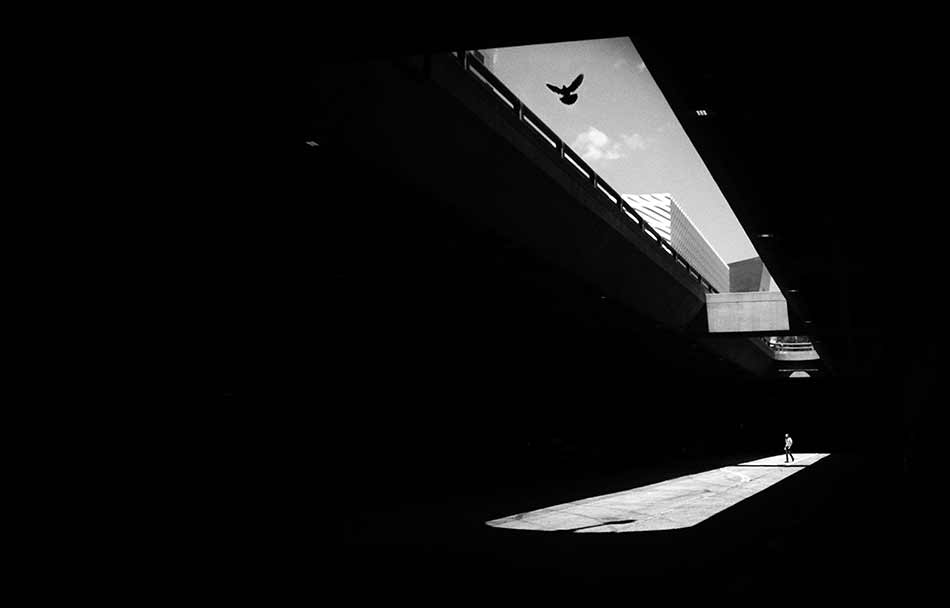
Daniel Sackheim © All rights reserved.
L. A.: Many people in the art world undervalue “photography” or don’t take it seriously. What do you think about photography as an investment for an art collector?
D. S.: Definitely not my area of expertise. I would only offer that, unlike paintings or sculptures, a photograph, which I’ve heard referred to as a “clock that sees,” eventually takes on a patina of nostalgia. So, presumably, photography should increase in value over time.
L. A.: I speak to many first-time collectors who ask me for advice on the medium; as an artist yourself, what advice would you give someone who is looking to start a collection. Do you think it is a balance between being in love with the visual itself or finding value in terms of possible investment?
D. S.: As a collector myself of both paintings and photography, I only buy what I love. I would be happy to see what I buy appreciate in value, but the motivating factor behind the purchase is always about providing a sense of joy. This is not to suggest my approach makes for a good investment strategy.
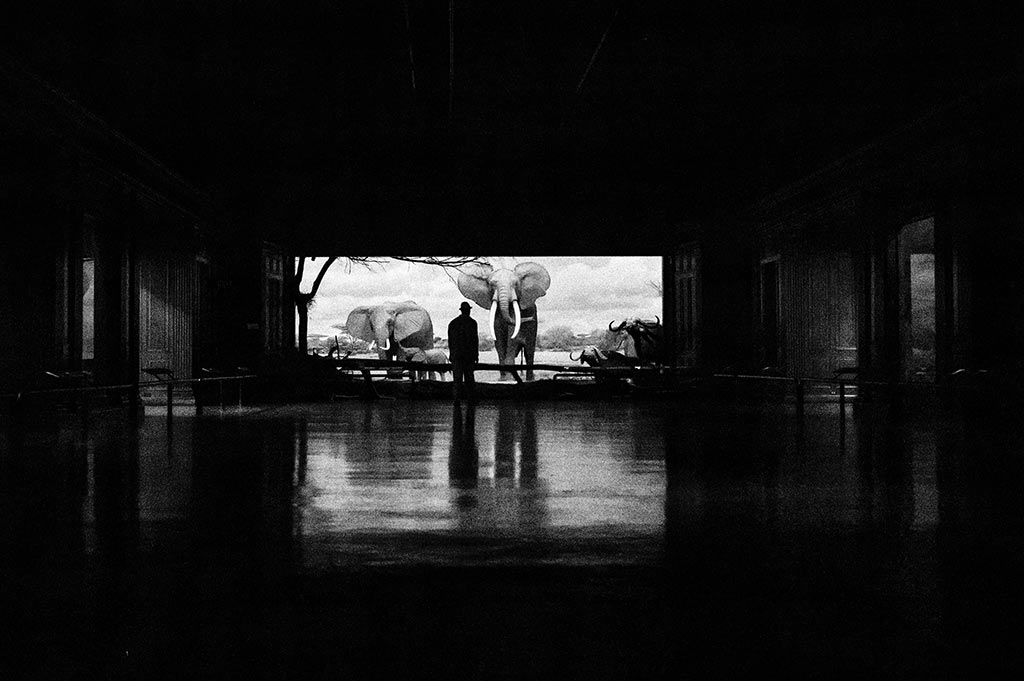
Daniel Sackheim © All rights reserved.
L. A.: I have personally been in love with photography since I was a teenager and was inspired by the 90’s visuals of Peter Lindbergh and Paolo Roversi. Has fashion photography inspired you at all?
D. S.: Absolutely. I’m also a fan of Peter Lindbergh, Richard Avedon, and Patrick Demarchelier. Giants all. I think the baton has been passed on to the next generation of innovators, like Tyler Shields. I find his work, while very different from what I do, to be incredibly inspirational.
L. A.: What do you think makes black and white photography so appealing?
D. S.: I think it’s simply more interpretive than color, owing in part to the fact that humans see in color. This brings an inherently more heightened reality to the medium. Black and white amplify how you see negative space, which is easier to showcase and highlight in a monochromatic image, forcing the viewer to focus more intently on the frame’s light and dark areas and interrelationship.
L. A.: Do you have an opinion on all these new digital platforms that are popping up claiming to support photographers, or do you think the traditional style is still the way forward for talents? Meaning ( gallery, art fair, agency), etc.
D. S.: By that, I presume you mean platforms like Foundation? If so, then I think it’s long overdue. I love the idea of decentralizing and democratizing the art market by placing more control in the hands of the artist themselves. This isn’t to suggest there isn’t a place for galleries and art fairs, as I love the gallery experience, and I would admit it’s sometimes a challenge to wade through the volume of images on such platforms, but it feels like a huge and positive leap forward.

